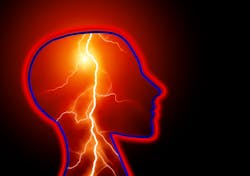The U.S. Food and Drug Administration approved the MicroTransponder Vivistim Paired VNS System (Vivistim System), a first-of-its-kind, drug-free rehabilitation system intended to treat moderate to severe upper extremity motor deficits associated with chronic ischemic stroke—a stroke caused by a blockage of blood flow to the brain with long-lasting symptoms—using vagus nerve stimulation (VNS).
The Vivistim System is intended to be used, along with post-stroke rehabilitation therapy, in patients who have had ischemic stroke, to electrically stimulate the vagus nerve—a nerve that runs from the brain down to the abdomen—to reduce deficiencies in upper limb and extremity motor function and to improve patients’ ability to move their arms and hands. To use the Vivistim System, an implantable pulse generator (IPG)—which generates a mild electrical pulse—is implanted just under the skin in the chest of the patient. Attached to the IPG is a lead wire that is implanted under the skin and leads up to electrodes that are placed on the left side of the neck where the vagus nerve is.
Accompanying the implantable components are clinician software preloaded onto a laptop and a wireless transmitter to be used only by a health care provider. The software allows a health care provider managing a patient’s rehabilitation to input the appropriate settings on the IPG, including amplitude, frequency, and pulse width for the stimulation, and also records stimulation history, movements performed, and information about the IPG. The wireless transmitter communicates adjustments to the IPG settings made using the software.
The Vivistim System, a prescription device, may be used in both clinical and at-home settings to provide VNS.
The FDA evaluated the safety and effectiveness of the Vivistim System in a clinical study of 108 patients at 19 clinical sites in the U.S. and the U.K. who received the Vivistim System. Patients were split into a study group (53 patients) and a control group (55 patients), whereby both groups were asked to complete 300-400 physical therapy exercises for 90 minutes a day, three times a week for six weeks. The control group received only a very low level of VNS for the first five exercises of the 300-400-movement series and had no stimulation whatsoever for the rest of each session. The treatment group received the appropriate amount of VNS throughout all 90-minute rehabilitation sessions. Both groups received physical therapy sessions that were equivalent in quantity and quality. Following the initial six-week study, all patients received follow-up assessments at 1, 30, and 90 days following the study.
Effectiveness for the Vivistim System was measured using the Upper Extremity Fugl-Meyer Assessment (FMA-UE), a stroke specific measure of motor impairment. Progress was measured as an increase in motor function from baseline after six weeks of therapy.

